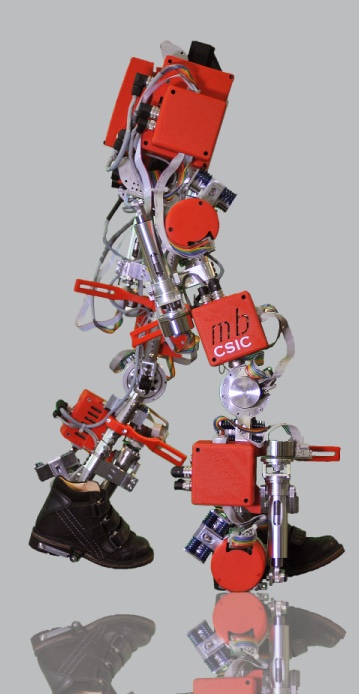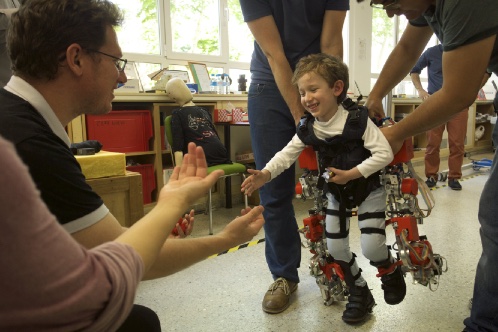Researchers Design Exoskeleton to Help SMA Kids Walk, Some for First Time
Written by |

The Spanish National Research Council (CSIC) recently unveiled a prototype of what it believes is the world’s first assistive exoskeleton designed to enhance mobility for children with the degenerative illness spinal muscular atrophy (SMA), a rare disease that affects 1 in 10,000 babies born in Spain.
The 26-pound device, made primarily of the lightweight metals aluminium and titanium, is designed to help children to walk, which in some cases will be for the first time. The exoskeleton will also be used as a physiotherapy device in hospitals to help prevent the effects associated with loss of mobility in SMA. Currently in the preclinical phase, the technology developed for the device has been patented and is licensed jointly by CSIC and its technology-based business unit, Marsi Bionics.
 The exoskeleton’s architecture is built around long support rods, or orthoses, which are adjustable to snugly fit the child’s legs and torso. The joints are powered by a set of servo motors to mimic the effort of human muscles, providing the child with the necessary strength to stand upright and to walk. A series of sensors feed into an onboard computer to tracks the child’s steps in order to create the smoothest mechanical gait possible. The entire apparatus is outfitted with telescoping supports that allow the mechanism to adjust as a child grows in height. A movement controller and a battery providing five hours of life between recharges complete the engineering components.
The exoskeleton’s architecture is built around long support rods, or orthoses, which are adjustable to snugly fit the child’s legs and torso. The joints are powered by a set of servo motors to mimic the effort of human muscles, providing the child with the necessary strength to stand upright and to walk. A series of sensors feed into an onboard computer to tracks the child’s steps in order to create the smoothest mechanical gait possible. The entire apparatus is outfitted with telescoping supports that allow the mechanism to adjust as a child grows in height. A movement controller and a battery providing five hours of life between recharges complete the engineering components.
“The number one drawback in developing this type of pediatric exoskeleton is that the symptoms of neuromuscular illnesses — such as spinal muscular atrophy — change over time, as much in the articulations as in the body,” said Elena Garcia, senior researcher at the CSIC/Politechnic University of Madrid’s Centre for Automation and Robotics, and founder of the spin-off Marsi Bionics, in a press release.
“That’s why it’s fundamental to have an exoskeleton capable of independently adapting to these changes. Our model includes intelligent joints which alter the brace’s rigidity automatically and adapt to the symptoms of each individual child whenever required,” she added.
The CSIC exoskeleton is designed for use by children between the ages of 3 and 14. The necessity of having five assistive motors in each leg to balance the standing child to help keep them up and active, all requiring space to function, restricts the minimum length of each leg, and the unpredictability of involuntary body movements typical of children younger than 3 obliged the researchers to set an age limit for the device. The Spanish National Research Council will continue working on finding ways to lighten and simplify the bulky device. In future versions for use with pathologies that don’t restrict joint movement — and therefore require fewer motors — a smaller frame device would be possible, García said.
García and her research and development team hope the exoskeleton helps SMA patients walk and thereby prevent spinal curvature — a typically side-to-side type of curvature called scoliosis — from setting in along with a chain of associated conditions caused by the inability to stand upright and walk.
The CSIC/Marsi Bionics exoskeleton project is being financed by the Spanish Ministry of the Economy and Competition, and through the European Union’s Echord++ program, with the help of medical specialists at the Sant Joan de Déu Children’s Hospital in Barcelona and the Ramón & Cajal University Hospital in Madrid.







